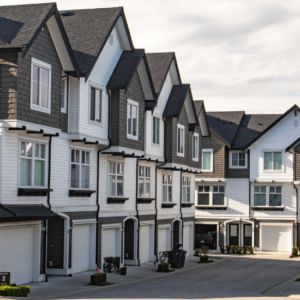When building a new residence, choosing an energy-efficient home design is important. Ensuring compliance with the International Energy Conservation Codes is mandatory. However, it can be a challenging and confusing process, especially as you move between various municipalities. Currently, there are two main paths a builder can follow for compliance. The first is called the prescriptive path, and the second is called the performance path. Ensuring energy compliance can be a confusing process. If you need assistance with energy compliance in your home, let the experts at Energy Diagnostics, Inc., help.
What Is the Prescriptive Path?
Builders who follow the prescriptive path must use a list of features and items that need to be checked off for compliance. There are no deviations allowed here when building energy-efficient homes using this model. At first look, the prescriptive path might seem like the most simple and straightforward option to use. However, there is very little to no room for flexibility in both the material selection and design approach. Builders who follow the prescriptive path need to read up on all guidelines in the International Energy Conservation Code. You also need to know the rules and amendments for each municipality.

What Is the Performance Path?
The performance path allows the builder the most flexibility in how to meet the required energy codes. There will be a Home Energy Rating System rater involved early on, from the initial design stage, to model what the energy performance of the house will be and ensure you are within compliance levels. Many design teams and builders prefer the performance path because they have the freedom to evaluate different combinations of components, design strategies, and even technologies. They will do this until reaching the right solution that provides the best energy savings for the lowest cost. Another perk with the performance path method is that the Home Energy Rating System rater will be familiar with local requirements so you won’t be expected to know the rules for the local municipalities.
To understand the differences between the prescriptive and performance paths, it’s best to look at some examples. Under the prescriptive path, rules would tell a building contractor exactly what to use for a vacuum cleaner motor. The performance path would not dictate the specifications. Instead, it would tell them what the desired suction is, allowing the contractor to decide what size motor to use.
Another example is the option for a builder to use a slightly less energy-efficient window provided that they make energy improvements elsewhere in the home.
How To Use Performance Path Energy Efficient Home Design Building Codes
To use the performance modeling method, you must use “modeling” to figure out the predicted energy usage against what an acceptable baseline is defined as. You can use modeling software that will allow you to create a virtual building. You plug in historical weather information, and it will predict how the house would perform under those particular conditions.
There are two main sub-methods of the performance path option. The first is known as the envelope trade-off method. With this option, the designer can choose trade-offs within the building envelope. For example, if some elements are performing well, it allows for a trade-off and some leniency with others, such as insulation. If the insulation in the walls is higher than required, the designer might be able to reduce the amount necessary in the roof.
The second option is one where building designers make trade-offs between the building envelope and the systems that run the house, such as cooling, heating, and lighting. Computer modeling is required with this option to ensure the home is still within the established energy code compliance requirements.
Earning Points for Energy Conservation
All new construction homes must meet the mandatory requirements for both energy and water efficiency. Then the builder has the option to choose which path they want to get the home certified. Both the prescriptive and the performance paths award points, just in different ways.
Energy points are awarded as follows:
- Performance Path: Points are determined using modeling analysis. Any energy saving levels above the most current International Code Council International Energy Conservation Code will receive points based on the overall percentage of savings.
- Prescriptive Path: Points will be awarded for practices that include things like heating system efficiencies, duct sealing, air infiltration, lighting, water heating system efficiencies, appliances, and on-site renewable energy.
Water points are awarded as follows:
- Performance Path: There is a Water Rating Index alternative compliance path that will assign a score of zero to 100 for the project when compared to a standard home. The rating works by the lower the score, the more efficient the home is. The project’s anticipated water savings from various sources, including indoor and outdoor water usage, will be calculated to determine the score. That score is then changed to reflect National Green Building Standard certification levels.
- Prescriptive Path: Water points are earned for individual efficiency features, such as appliances, irrigation practices, structural plumbing, and more.
Potential Benefits of Using the Performance Path
Determining which energy-efficient home construction method to use is up to the builder in most cases. However, some areas are moving to performance path building only. Even if you are in a location that hasn’t mandated a switch yet, there are some potential benefits with the performance path. The first is the potential to save money. You may be able to save thousands or more in materials and construction costs that the prescriptive path does not allow for. Some people think the need for an energy rater or energy modeling software is too expensive. However, using an energy rater or energy modeling software can help further reduce the overall build costs.
Flexibility is certainly another benefit when building a home with the performance path. Builders can enter energy codes into the model, allowing a designer to optimize the different components, equipment, etc. This method also contributes to saving money, time, and overall operating expenses.
Contact Energy Diagnostics
If you need assistance with energy efficiency and energy code compliance, let the experts at Energy Diagnostics help. We offer a variety of residential and commercial compliance services, and we have Home Energy Rating System raters and Green/Energy Star verifiers on staff. Contact us today to learn how we can help with your energy-efficient home designs.
